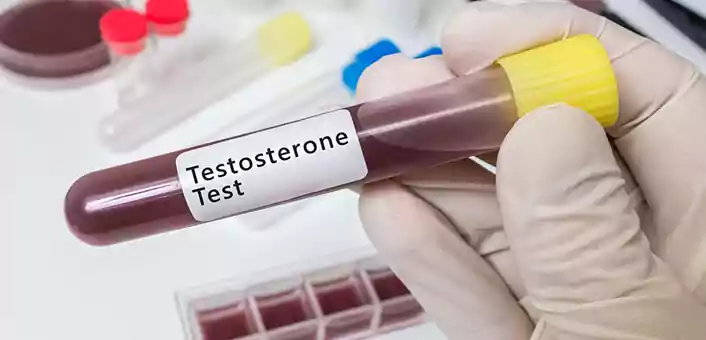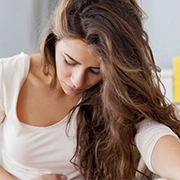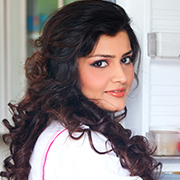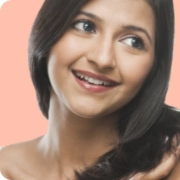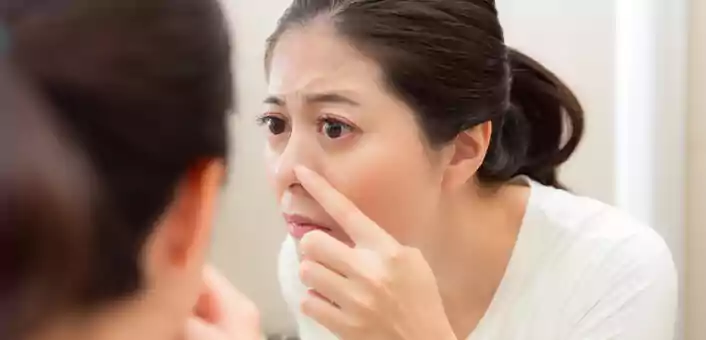
Living Well
Body Acne: Causes, Types & Natural Ways To Get Rid Of It
Feb 2, 2018Acne is ubiquitous in the teen years, and with hormones swinging up and down like a yoyo, vastly changing the developing body, we all but expect this common skin condition at this time. But Mother Nature can be harsh, and sometimes acne doesn’t remain behind in our youth… and instead remains on our behind. And our shoulders, back, chest and neck. Let’s take a look at what acne is, its causes, the signs you may be suffering from hormonal acne and natural ways to deal with body acne.
What Exactly Is Acne?
According to PubMed Health, acne is “a chronic disorder with an increase in sebum secretion… characterized by (blackheads) and (whiteheads).” It occurs when the hair follicle becomes blocked by the sebum produced within, mixed with a hearty dose of dead skin cells and the addition of Propionibacterium acnes.
These bacteria are normally present deep down in the follicles of healthy adult skin. They thrive on sebum and cellular debris, and with an increase in sebum production or the blockage of the follicle, they multiply causing local inflammation, damage and, well, body acne.
Types Of Body Acne
Whether you are a teen going through puberty or a grandmother going through menopause, the types of acne are the same. One, or even many, of the following types of pimples can unhappily co-exist on the same person’s skin.
Acne by severity: It can be diagnosed as mild, moderate or severe.
Acne conglobata is an extreme example of this condition, where inflamed nodules are connected to other nodules underneath the skin. It is painful and can lead to significant scarring.
Acne mechanica is as the name suggests, brought about by mechanical friction. Athlete? Yes, this one might be your culprit.
Common acne is the most likely diagnosis, and is also given the horrible name, acne vulgaris.
According to The National Institute of Arthritis and Musculoskeletal and Skin Diseases, there exists a variety of pimple types, including:
Whiteheads are pimples that remain below the skin’s surface.
Blackheads are pimples that reach the surface of the skin. They look black not due to dirt as commonly thought, but as a result of the oxidation process from reaching the air.
Papules are little pink or red bumps that may feel tender.
Pustules are inflamed and red at the bottom, with pus sitting on top.
Nodules are large, solid infections that lie deep in the skin.
Cysts hurt! They lie deep within the skin also, are pus-filled and can cause significant scaring.
Causes Of Body Acne
According to Dr. Francesca Fusco, MD, assistant clinical professor of dermatology at Mount Sinai Medical Center in New York City, acne can be caused by non-hormonal skin assaults, like hair removal (I’ve experienced post-threading spots myself!), travel, some sunscreens and stress. On second thoughts, when we look at the hormonal underpinnings of stress, we might need to place this gently into the endocrine basket too. Ah, wayward hormones; the cause of so much pain.
Dr. Loren Cordain has looked specifically into the food plans of hunter and gatherer type communities and the western world and the incidence of acne. Through this, he has helped discover the link between insulin resistance and this common skin condition. I’ll rephrase, this common skin condition in the West. In communities who did not consume sugar and white flour, acne was difficult to find. Even in teens, who are naturally insulin resistance in order to encourage growth and so one would imagine, naturally more prone to pimples and the agony of acne.
In women, the presence of acne should raise a vibrant red flag for the potential presence of an underlying condition called Polycystic Ovarian Syndrome (PCOS). Estimates vary, but more than 30% of women with adult acne have this syndrome. Women with PCOS are often insulin resistant and, by definition, likely to have high testosterone levels (we’ll talk about this in a moment).
High testosterone has also been linked to body acne in both men and women. Free testosterone increases the production of sebum, the preferred food choice for Propionibacterium acnes. This hormone also stops the top layer of skin cells, the dead keratinocytes, from being shed normally, leading to the clogged pores that contribute to spots.
Signs You Are Dealing With Hormonal Body Acne
Hormonal acne in women is often exacerbated by the cyclical changes of menstruation. Many women — especially those already prone to acne — experience mid-cycle skin flare ups. As progesterone rises following ovulation, the skin swells and can compress the pores, creating congestion and a potential bacterial breeding ground.
Then there’s the endocrine elephant in the room…
If you are a woman who also experiences weight gain, excessive facial and body hair, who has an irregular (eight or less periods per year) or absent menstrual cycle, you may have Polycystic Ovary Syndrome, as mentioned above. This requires diagnosis, and if this is the cause for you, you are in the right place for helpful information.
For both men and women, if you take anabolic steroids, yes. This could cause hormonal acne too.
With that said, let’s delve into the natural therapy depths and see how you can create glowing, healthy skin.
Natural Ways To Get Rid Of Body Acne
Adults with mild body acne may choose not to seek any treatment. Those with physically or emotionally painful acne may seek professional advice, and a dermatologist may help you decide what is right for you. From my experience over countless years (yes, I’m showing my age!) I believe that, sometimes, this is a helpful approach for crisis care. Remember, spots can be very painful! But, whether you choose a medical approach or not, you need to implement lifestyle and natural approaches for a healthy and holistic outcome.
Evidence-based approaches for treating body acne include:
- Choosing low glycemic load foods, like fresh fish, vegetables, berries and nuts. Studies have shown that even severe acne can be reduce with a diet containing 25% protein and 45% low glycemic foods, and that a vegetarian diet with a high percentage of plant proteins results in a decrease in free testosterone in the blood.
- Losing weight, where necessary, especially around the mid-section.
- Licorice root (glycyrrhiza) can reduce high testosterone levels and is used in women with PCOS to do so.
- Fish oil helps to reduce inflammation levels within the body, which may be of benefit in acne.
- Supplemental zinc has been known to aid in skin healing and reduce whiteheads, blackheads, papules and pustules for many years.
- Stress management. Stress causes insulin resistance, and stress has been shown to exacerbate this condition. Meditation, exercise, Yoga, laughter and social support are all well advised.
- A professionally guided detoxification program can reduce inflammation and help to improve hormonal balance, your health and the health of your skin.
- Avoiding products containing the chemical, bisphenol A (BPA). This can be found within the lining of tinned foods, in water bottles and cups, and in some dental sealants. It has been shown to increase testosterone levels, and amongst other health issues, it may contribute to body acne.
- Manuka honey has been shown to be an effective topical antibiotic for wound healing and may help in acne.
- Tea Tree oil can be apply topically, diluted in a carrier oil.
- Tannins are found in the bark of Witch Hazel, English Walnut or White Oak trees. Boil 5-10 grams of bark with 1 cup of water and, after cooling, apply like a toner. Do not buy commercially produced products as the tannins have been removed during distillation.
- *Vitex is an herbal supplement taken orally as advised. However, while I have witnessed incredible results with this wonderful herb, I recommend only taking this under the guidance of a suitably qualified health professional.
- *Brewer’s Yeast is known for its antimicrobial properties and can be taken as a supplement.
- *Bittersweet nightshade can be applied topically (it is considered HIGHLY TOXIC IF INGESTED).
*The German Commission E, an agency that studies herbal remedies, supports the use of Vitex, Brewer’s Yeast and Bittersweet nightshade as treatments for body acne.
While body acne may be a condition many wish they had shed in their youth with their hyper-color t-shirts and Milli Vanilli album collection, by identifying the cause or causes of the pimples and implementing positive lifestyle and natural, therapeutic approaches, it is possible to stop suffering and become blemish free.
